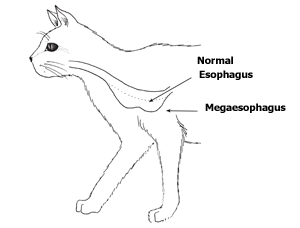Many of you may have heard about the recent outbreak of
Canine Influenza Virus (CIV) in the Chicago area. Being somewhat close to
Chicago (about 2 hours south) and having a lot of students that travel back and
forth, we wanted to take the opportunity to spread the word about this highly
contagious condition.
So what is Canine
Influenza Virus (CIV)? As the name suggests this is a virus that can be
VERY easily spread throughout our canine population. One of the reasons it is
so highly contagious is that it is considered an aerosolized virus. This means
if the patient coughs or sneezes the virus can be transmitted to another dog
through particles in the air. It can also be transmitted on shared toys, bowl,
etc OR if they have direct contact with the infected dog. People’s clothing can
also carry the virus and then transmit it to other dogs. One of the good things
about this virus is that it is exclusive to dogs, it cannot currently be
transmitted to people or other species. One of the most concerning aspects of this virus is that patients will be able
to spread the virus most effectively PRIOR to them showing any clinical signs.
So by the time we start seeing symptoms, many other dogs could have already
been exposed.
Which dogs are at
risk? Unfortunately all dogs are at risk. However some dogs are at an
increased risk. These would include dogs that visit dog parks, boarding or
daycare facilities, grooming facilities and those that live in apartment
complexes with a large number of dogs. Basically any dog that comes in contact
with other dogs is at increased risk, but all dogs are susceptible to this
condition.
 |
| These are the most common symptoms of CIV but can be confused with other upper respiratory conditions. (Image Source) |
What are the symptoms
we may see with Canine influenza Virus (CIV)? Symptoms are primarily
confined to the upper respiratory system (nose and throat) and can mimic other
respiratory diseases. Many times CIV can be confused with the Bordetella
bacteria which is the most common cause of kennel cough in pets. Symptoms can
range from mild nasal discharge, cough, a low grade fever and a lack of energy.
As the condition progresses, it can lead to very elevated fevers, pneumonia,
and a significant decrease in appetite. CIV has been noted to be fatal but it
is typically in less than 8-10% of the confirmed cases. In several of these instances
the affected patients had other debilitating or chronic conditions.
How do we know if our
pet is infected with the virus? There are tests available to confirm the
diagnosis of CIV. These can be done by a nasal swab or a blood draw. They can
be quite costly (in some cases the cost can be over $200). Without a confirming
test, treatment is based on how the pet is presenting and how they are
responding to treatment.
What is the treatment
for Canine Influenza Virus (CIV)? This really depends on the severity of
the condition. If it is caught early and there is only a mild cough with mild
nasal discharge and no evidence of dehydration or lack of appetite, then outpatient
treatment can be initiated. This may include a cough suppressant, an antibiotic
and will definitely involve keeping your pet isolated from other animals so
that they do not continue to spread the disease (whether it is CIV or Bordetella).
In more severe cases if the patient is
dehydrated or has developed pneumonia or extremely high fever in hospital
treatment may be required. This could be intravenous fluids with injectable
antibiotics if the patient will not eat. In EXTREME cases oxygen support may be
required. This is not the normal outcome but has been noted in several severe
cases.
My dog is coughing,
what should I do? You should always call your veterinarian with any
abnormal symptoms in your pet. With the current outbreak, it is important to
tell the veterinary staff if you have traveled with your dog, if they have
boarded recently or regularly go to doggy daycare. This will help them take
measures to minimize spread of these conditions.
 |
| The sooner your veterinarian is contacted the sooner treatment can begin. (Image Source) |
Is there a vaccine
available? There is a vaccine available. Initially it is a series of two
vaccinations separated by 2-4 weeks. After that it can be boostered yearly. It
is not considered a core vaccination but is now being recommended in affected
areas for ANY dogs that spend time in dog parks, grooming or boarding.
(Basically dogs that can come in contact with other dogs). As with any vaccine
we still need to monitor for any signs of vaccine reactions such as pain at the
injection site, vomiting, or diarrhea. If these occur please call your
veterinary clinic. Overall the vaccine seems to be fairly well tolerated.
Another important aspect of the vaccine, is that it is not 100% effective. As
with many vaccines it will not completely prevent an infection but it will
lessen the duration of the illness as well as decrease the amount of time the
patient is shedding the virus. If you are interested in this vaccine it is a
good idea to contact your veterinarian to see if they carry it and if they
think it would be appropriate for your pet. Currently our office is requiring
this vaccine for all boarding animals. This is due to the large amount of clients
and pets that we see coming to and from the Chicago area.
Where can I go to
find more information? The following websites offer great information concerning
Canine Influenza Virus. You can always call your veterinary office to obtain
further information as well.


















